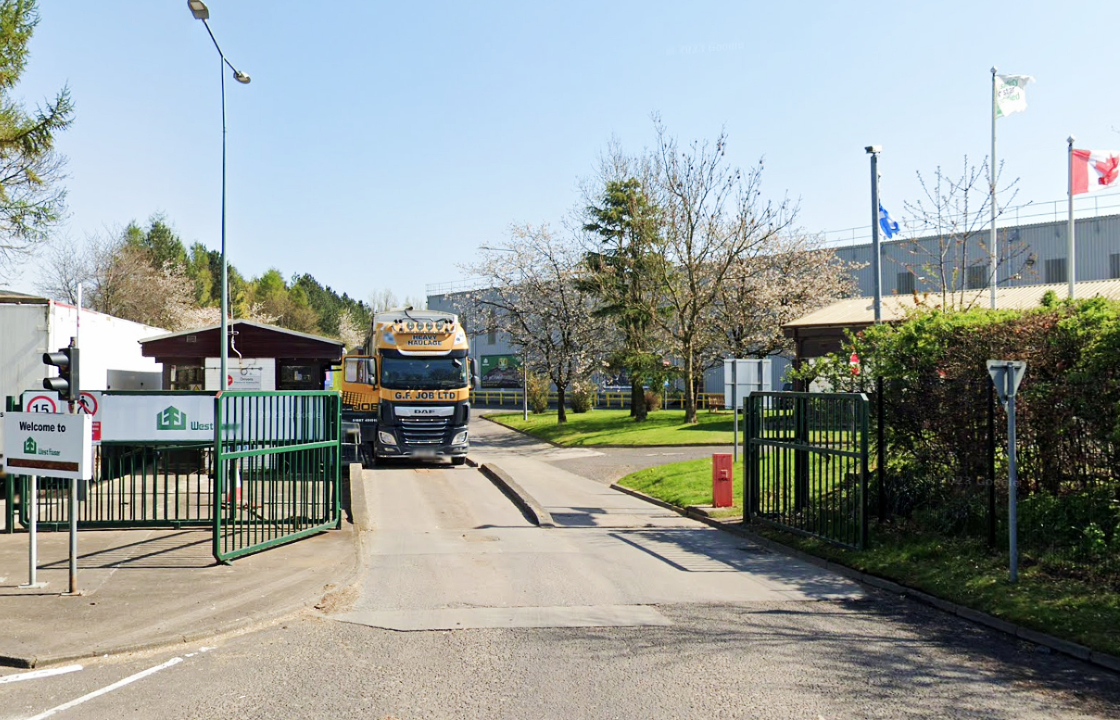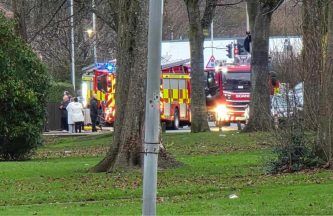A company that runs a Scottish chipboard factory has been fined £1.1m after admitting its safety failings led to two separate industrial accidents that caused serious injuries to two workers within six months.
West Fraser (Europe) Ltd, formerly known as Norbord, pleaded guilty to multiple breaches of health and safety at its plant in Cowie, Stirlingshire.
A 29-year-old utility operator suffered serious injuries and permanent impairment after his leg became entangled in moving parts at the bottom of a storage bunker in January 2020.
A 39-year-old scaffolder plunged more than 13 feet to the ground after a rusty plate gave way on a rooftop gantry in July the same year.
The factory, a major employer in the Falkirk, Stirling and Alloa areas for over 50 years, was originally known as Caberboard.
It is the second time in five years it has been issued with huge fines – in 2020 it was fined £2.15m for an incident at the Cowie plant in which an employee suffered fatal burns.
It was opened in the 1970s by private traders with German and American finance, and was the first factory in the UK to manufacture the ubiquitous natural wood substitute MDF.
It is now in Canadian ownership.
Prosecutor Catherine Fraser told Stirling Sheriff Court on Tuesday, January 14, that the utility operator had entered the bunker where the accident happened, which stored biomass for the plant’s boilers, in order to clear a clogged auger.
Without turning off the power and isolating the system, he got into the bunker through an inspection hatch that had no protective guard fitted, and his right leg became entangled in the auger.
Despite his injuries, he telephoned the control room from within the bunker using his company mobile, and staff isolated the machinery and contacted the emergency services.
He was taken to Forth Valley Royal Infirmary with compound fractures to both the tibia and fibula in his right leg that required the fitting of a metal frame to support the healing bones, and multiple lacerations that required skin grafts.
He suffered nerve damage, muscle loss and bone loss, still required treatment for both his physical and mental injuries, and hasn’t returned to work since, the court was told.
The court heard the company had since fitted a secondary guard to the hatch, secured by a padlock, the key to which is kept secure in the supervisor’s office, and only issued in the event of the entire system being isolated and locked off.
Regarding the second accident, the depute fiscal said the scaffolder, an employee of a Chester-based firm, Palmers Scaffolding UK, was providing holiday cover at the site when he was instructed to help erect scaffolding to provide access for maintenance, using a permanent gantry on the roof accessed by a fixed ladder.
Having completed his task on the roof, he set out to descend, but as he jumped down onto the gantry, a rusty floor plate gave way, falling to the ground and taking him with it.
Ms Fraser said it was “immediately obvious” to his colleagues that he was seriously injured, and the emergency services were called.
He was taken to the Queen Elizabeth Hospital in Glasgow with ankle fractures, a “shattered” left heel, a broken elbow and ribs, multiple fractures to vertebrae in his neck, a collapsed lung and a broken finger.
Ms Fraser said an inspection showed the steel floor plates of the gantry were corroded and the welds holding them to the structure were also corroded to the point of failure.
Inspectors concluded the “likely cause” of the walkway floor collapsing was corrosion of a floor plate at its supporting edge.
Their report added: “Due to the location of the floor plate that failed, general corrosion of the steel gantry, and the presence of moss and debris, it is likely that the poor condition of the edge of the plate went unnoticed.”
The court heard that immediately after the accident, the gantry was placed out of bounds, dismantled, and removed.
The company has since introduced an improved system of maintenance, the court was told.
Mark Stewart KC, defending, said the company promoted health and safety procedures throughout its workforce.
Sheriff Keith O’Mahony said that in the auger incident, the victim, for reasons unknown, had deviated from safety procedures the company had operated successfully for years.
He said: “What I have to assess is not what the injured party did, but rather what he was able to do as a result of the health and safety deficiency. He was able to expose himself to the risk of significant harm, and significant actual harm was caused.”
In the case of the worker injured when the gantry collapsed, Sheriff O’Mahony said there was “evidence of confusion” between departments as to who had responsibility for maintenance of the gantry.
He said: “There was significant actual harm caused. The injuries sustained were severe, and there was plainly a risk of death. There were a number of other workers engaged in the same project and therefore exposed to the same risk.
“The risk itself had never been identified, there is no evidence it was going to be, and therefore no evidence remedial work would have been undertaken.”
Follow STV News on WhatsApp
Scan the QR code on your mobile device for all the latest news from around the country


 Google Maps
Google Maps

























